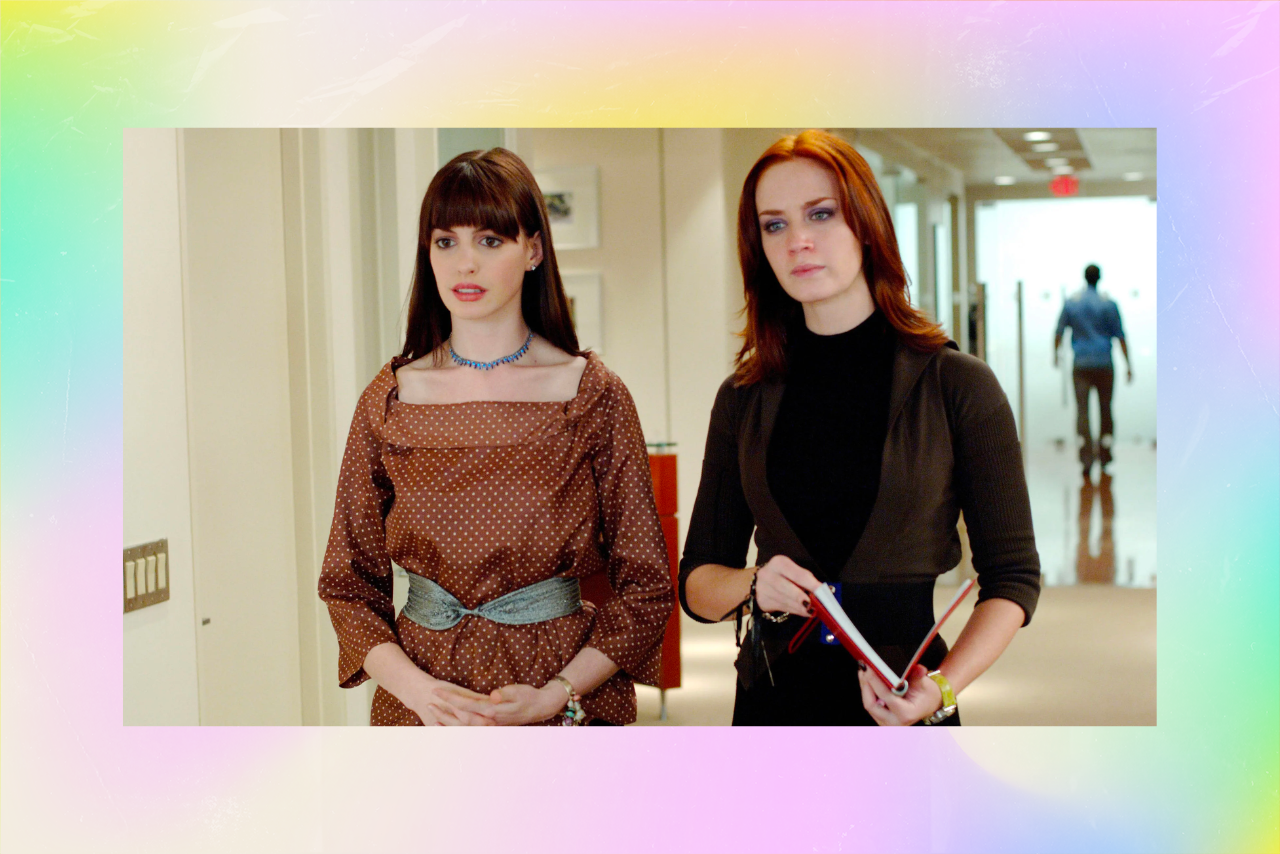There has been a reemergence of feminine fashion in the corporate world. Taking over TikTok, we have seen the Office Siren. This trend references the resurrection of the 90s and 2000s feminine office attire. This tends to involve pencil skirts, fitted or tailored blouses, kitten heels and (we must not forget) the Bayonetta glasses – these are essential to the look. The Office Siren, as I’ve explained, is no new phenomena- it is just ‘geek chic’ rebranded once again to appeal to Gen-Z: the generation victim to fast fashion and micro-trends.
Don’t get me wrong, the Office Siren is captivating for a reason. I’ve fallen victim to many a Depop search related to the style. Feeling confident is obviously empowering, so applying this to the workplace seems foolproof. I can’t help but fangirl over this ‘The Devil Wears Prada’ trend, with prominent figures such as Bella Hadid, Friends’ ‘Rachel Green’ and ‘Sex and the City’ characters embodying this. Another prominent figure we’ve seen leaning into this ‘corporate fetish’ is Kim Kardashian in her Skims ad. Whilst I love that Gen-Z are entering the workforce and finding their style accordingly, the Office Siren remains a touchy subject to delve into.
This heavily contrasts with the previous office style adopted by women in the 80s. Women were finally being allowed to enter more managerial roles and their office fashion reflected this, with pantsuits and blazers with shoulder-pads: power-dressing. However, with the significant cultural, technological and political changes (notably the emergence of the internet), societal attitudes followed suit and a new generation was born. Following this, models on the runway also changed, along with the societal expectation of women’s bodies. The surge of new wave femininity had arisen, with ‘Sex and the City’ airing, the Spice Girls and Fendi Baguettes taking the world by storm.

This is where my issue with the Office Siren lies.
The Office Siren aims to reclaim our place unapologetically in the workplace, whilst not having to de-feminise ourselves in the way that women in the 80s may have had to. But is the Office Siren truly empowering or are we yet again falling victim to patriarchy? There are countless unwritten rules for women in the workplace. We must dress feminine but not too feminine and pleasing but not too pleasing. We have been put down and overlooked in the corporate world for generations, overcompensating to be taken seriously and earn basic respect. I ask: is harnessing our sexual agency in the workplace the right move as we continue to exist in a world where women’s rights are constantly devalued? Why must we drag on the societally feminine performance at the workplace, where gender roles are already so disparate?
Not only is patriarchy an issue with the Office Siren, but also general discomfort. Tight-fitted blouses, short pencil skirts and pointed-toe stilettos are a formula for self-destruction. We know that beauty is pain, but at what cost? Do we wish to limp around the corporate world with bruised and blistered feet? This look is impractical unless you are bringing a change of shoes and working purely in a cubicle. Nothing in the corporate world is made for women, in fact the average office temperature is set to suit mens body temperature.
Another pitfall associated with the Office Siren is its exclusivity. What is considered as work appropriate on one body type will be deemed as inappropriate on another. Specific attributes of this look would not be approved on my body and other curvier bodies. But why should it be my fault? I’m tired of being reprimanded for wearing the same outfits I see on the runways. If we want to partake in the ‘hot girl business casual’ rebrand, then we can. Dress codes are unreliable and patriarchal anyway.
Here is my approach to execute this look in a more inclusive way. I enjoy wearing trousers, so I’ve invested in some vintage low-rise pinstriped trousers. Perhaps purchase cardigan clips so that you can cinch your blouses in a more controlled manner (for the curvier girls). Another tip is generally buying a bigger blouse and then tailoring it to be fitted. As for shoes, I would either bring an alternative pair for comfort or remove the heel in general. I’d say moving towards flat pointed-toe pumps, sling-backs or Mary Janes.


